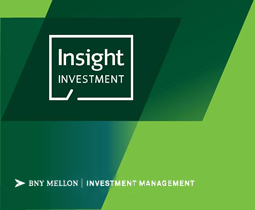Dear Amol,
“It’s deja vu all over again.” – Yogi Berra
Today’s inflation report is eerily reminiscent of last month’s, as covered in Instant Insights: Some Like it Hot.
Supply chains and economic reopening create a perfect stormHeadline CPI rose 0.6% month-on-month to hit 5% year-on-year, the fastest since 2008. Core CPI also substantially beat expectations at 3.8%, the fastest since 1992.
We are currently in a perfect storm: new car production is being impaired by chip shortages and rental car companies are holding off from selling their fleet of used cars as consumers are rushing into leisure spending post-vaccination.
As with last month, used car prices surged, rising another 7.3% (up nearly 30% from last year). Car rental prices rose 12% and have risen 45% in just the past three months. Elsewhere, airfare and apparel prices also rose significantly, benefitting from the continued economic reopening.
Gains like this simply cannot be sustained. The two auto categories account for less than 4% of the index, but drove 40% of this month’s increase in CPI. Certain signs are indicating that conditions are normalizing. For example, General Motors announced last week that it is restarting several factories.
Still no real signs of persistent inflationThe stickier ‘shelter’ and ‘healthcare’ components of CPI still show little sign of accelerating.
Medical services prices declined 0.1% as health insurance profits begin to normalize. Meanwhile, rents rose just 0.2% while owner’s equivalent rent is bouncing between 0.2% and 0.3%. The rental categories account for a third of CPI, and together are up just 2%, roughly half the pre-pandemic run-rate. We anticipate a long, slow recovery in shelter inflation, which would weigh on the index as ‘base effects’ fade.
Figure 1: Inflation is currently limited to transitory categories1 |
 |
Peak CPI?As we have now passed the one-year anniversary of the most severe pandemic-related market shocks, we are now about to begin passing the worst of the COVID-related base effects.
As such, we expect CPI to begin to decelerate from here as these supply chains repair, the reopening rush fades, workers re-enter the labor force, and consumer spending on durable goods normalizes.
Categories like used car prices cannot rise 10% per month ad infinitum. Furthermore, some commodity prices have seen a pullback following recent gains, making it very difficult for 5% inflation to be sustained. Indeed, over the next three months, monthly inflation would need to accelerate further to eclipse the 5% mark on a year-on-year basis.
That said, we expect the descent in CPI to be slow. Returning to below 3% inflation will likely take until several months into 2022.
Figure 2: Has CPI reached the peak?2 |
 |
The dotted blue line indicates the path of monthly inflation assuming we return to 3-year pre-COVID CPI trends. The dotted green line is a risk case, indicating the path of inflation assuming used cars, rental cars and air fare prices continue to rise for the next few months (which we view as unrealistic). We find that even if the volatile CPI elements continue accelerating (all else being equal), overall inflation would still fall over the next several months as headwinds from base effects kick in.
'Buy the dips' still the playbookAbsent signs of persistent inflation, large inflation prints such as these have the potential to unnerve markets.
We believe patience and level-headedness will reward investors in the end. While we anticipate tapering in 2022 and an initial rate hike in 2023, we believe the Federal Reserve will stick to its guns in describing inflation as ‘transitory’ and do not expect a shift from its accommodative policy stance in the near term.
We will provide more of our thinking on Fed policy following next week’s FOMC meeting. |
Please feel free to reach out if you have any questions.
Kind regards,
Michael Houle Head of Relationship Management Insight Investment, BNY Mellon Center, One Boston Place, 201 Washington Street, Boston, MA 02108‐4408 +1 781 761 2382, www.insightinvestment.com |
